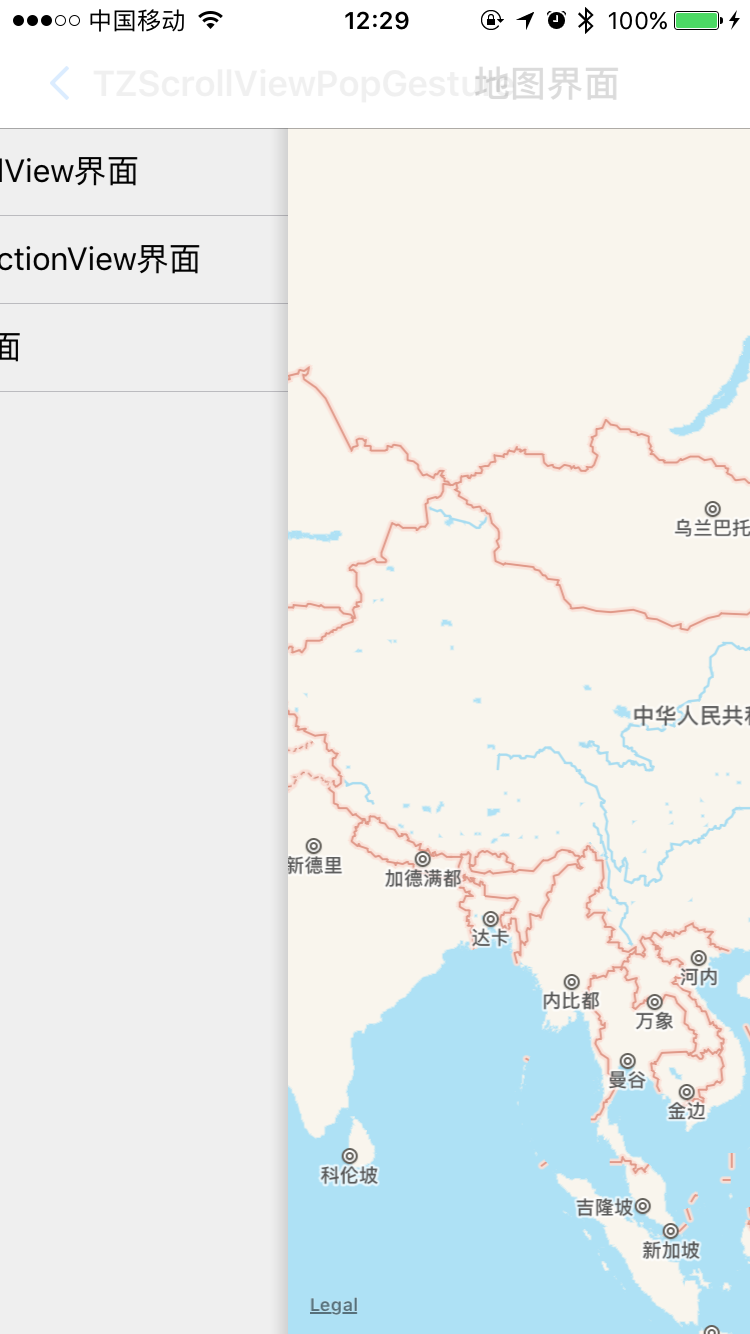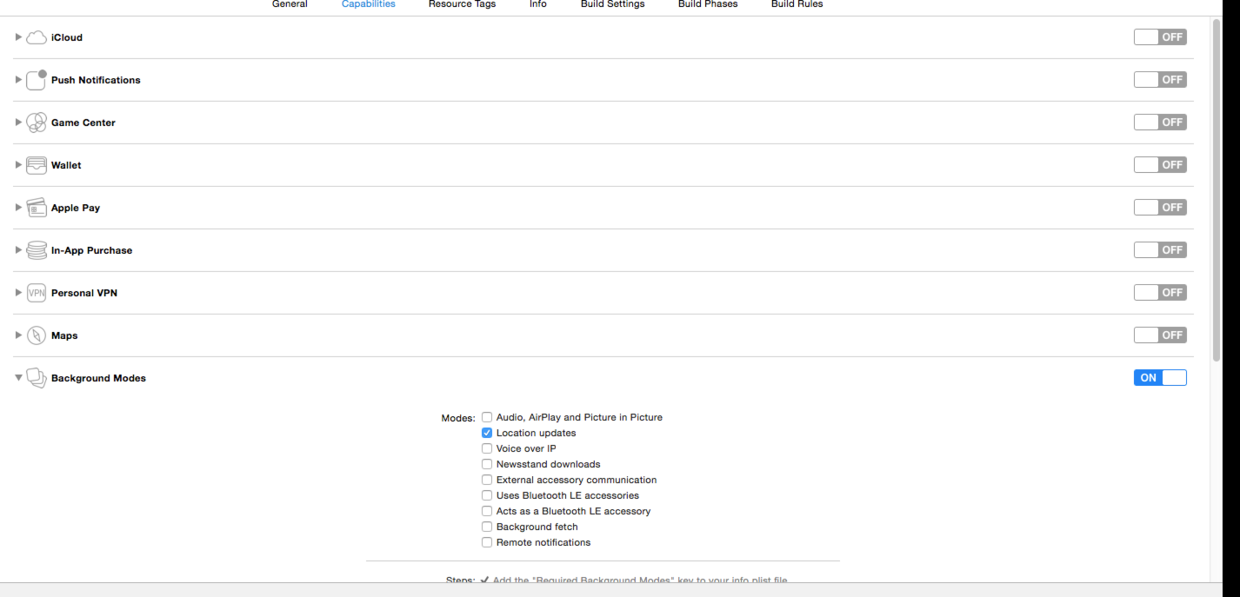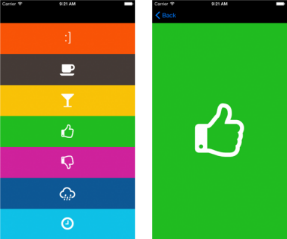Notification與多線程
前幾天與同事討論到Notification在多線程下的轉發問題,所以就此整理一下。
先來看看官方的文檔,是這樣寫的:
In a multithreaded application, notifications are always delivered in the thread in which the notification was posted, which may not be the same thread in which an observer registered itself.
翻譯過來是:
在多線程應用中,Notification在哪個線程中post,就在哪個線程中被轉發,而不一定是在注冊觀察者的那個線程中。
也就是說,Notification的發送與接收處理都是在同一個線程中。為了說明這一點,我們先來看一個示例:
代碼清單1:Notification的發送與處理
@implementation ViewController
- (void)viewDidLoad {
[super viewDidLoad];
NSLog(@"current thread = %@", [NSThread currentThread]);
[[NSNotificationCenter defaultCenter] addObserver:self selector:@selector(handleNotification:) name:TEST_NOTIFICATION object:nil];
dispatch_async(dispatch_get_global_queue(DISPATCH_QUEUE_PRIORITY_DEFAULT, 0), ^{
[[NSNotificationCenter defaultCenter] postNotificationName:TEST_NOTIFICATION object:nil userInfo:nil];
});
}
- (void)handleNotification:(NSNotification *)notification
{
NSLog(@"current thread = %@", [NSThread currentThread]);
NSLog(@"test notification");
}
@end其輸出結果如下:
2015-03-11 22:05:12.856 test[865:45102] current thread = {number = 1, name = main}
2015-03-11 22:05:12.857 test[865:45174] current thread = {number = 2, name = (null)}
2015-03-11 22:05:12.857 test[865:45174] test notification可以看到,雖然我們在主線程中注冊了通知的觀察者,但在全局隊列中post的Notification,並不是在主線程處理的。所以,這時候就需要注意,如果我們想在回調中處理與UI相關的操作,需要確保是在主線程中執行回調。
這時,就有一個問題了,如果我們的Notification是在二級線程中post的,如何能在主線程中對這個Notification進行處理呢?或者換個提法,如果我們希望一個Notification的post線程與轉發線程不是同一個線程,應該怎麼辦呢?我們看看官方文檔是怎麼說的:
For example, if an object running in a background thread is listening for notifications from the user interface, such as a window closing, you would like to receive the notifications in the background thread instead of the main thread. In these cases, you must capture the notifications as they are delivered on the default thread and redirect them to the appropriate thread.
這裡講到了“重定向”,就是我們在Notification所在的默認線程中捕獲這些分發的通知,然後將其重定向到指定的線程中。
一種重定向的實現思路是自定義一個通知隊列(注意,不是NSNotificationQueue對象,而是一個數組),讓這個隊列去維護那些我們需要重定向的Notification。我們仍然是像平常一樣去注冊一個通知的觀察者,當Notification來了時,先看看post這個Notification的線程是不是我們所期望的線程,如果不是,則將這個Notification存儲到我們的隊列中,並發送一個信號(signal)到期望的線程中,來告訴這個線程需要處理一個Notification。指定的線程在收到信號後,將Notification從隊列中移除,並進行處理。
官方文檔已經給出了示例代碼,在此借用一下,以測試實際結果:
代碼清單2:在不同線程中post和轉發一個Notification
@interface ViewController () @property (nonatomic) NSMutableArray *notifications; // 通知隊列
@property (nonatomic) NSThread *notificationThread; // 期望線程
@property (nonatomic) NSLock *notificationLock; // 用於對通知隊列加鎖的鎖對象,避免線程沖突
@property (nonatomic) NSMachPort *notificationPort; // 用於向期望線程發送信號的通信端口
@end
@implementation ViewController
- (void)viewDidLoad {
[super viewDidLoad];
NSLog(@"current thread = %@", [NSThread currentThread]);
// 初始化
self.notifications = [[NSMutableArray alloc] init];
self.notificationLock = [[NSLock alloc] init];
self.notificationThread = [NSThread currentThread];
self.notificationPort = [[NSMachPort alloc] init];
self.notificationPort.delegate = self;
// 往當前線程的run loop添加端口源
// 當Mach消息到達而接收線程的run loop沒有運行時,則內核會保存這條消息,直到下一次進入run loop
[[NSRunLoop currentRunLoop] addPort:self.notificationPort
forMode:(__bridge NSString *)kCFRunLoopCommonModes];
[[NSNotificationCenter defaultCenter] addObserver:self selector:@selector(processNotification:) name:@"TestNotification" object:nil];
dispatch_async(dispatch_get_global_queue(DISPATCH_QUEUE_PRIORITY_DEFAULT, 0), ^{
[[NSNotificationCenter defaultCenter] postNotificationName:TEST_NOTIFICATION object:nil userInfo:nil];
});
}
- (void)handleMachMessage:(void *)msg {
[self.notificationLock lock];
while ([self.notifications count]) {
NSNotification *notification = [self.notifications objectAtIndex:0];
[self.notifications removeObjectAtIndex:0];
[self.notificationLock unlock];
[self processNotification:notification];
[self.notificationLock lock];
};
[self.notificationLock unlock];
}
- (void)processNotification:(NSNotification *)notification {
if ([NSThread currentThread] != _notificationThread) {
// Forward the notification to the correct thread.
[self.notificationLock lock];
[self.notifications addObject:notification];
[self.notificationLock unlock];
[self.notificationPort sendBeforeDate:[NSDate date]
components:nil
from:nil
reserved:0];
}
else {
// Process the notification here;
NSLog(@"current thread = %@", [NSThread currentThread]);
NSLog(@"process notification");
}
}
@end運行後,其輸出如下:
2015-03-11 23:38:31.637 test[1474:92483] current thread = {number = 1, name = main}
2015-03-11 23:38:31.663 test[1474:92483] current thread = {number = 1, name = main}
2015-03-11 23:38:31.663 test[1474:92483] process notification可以看到,我們在全局dispatch隊列中拋出的Notification,如願地在主線程中接收到了。
這種實現方式的具體解析及其局限性大家可以參考官方文檔Delivering Notifications To Particular Threads,在此不多做解釋。當然,更好的方法可能是我們自己去子類化一個NSNotificationCenter,或者單獨寫一個類來處理這種轉發。
NSNotificationCenter的線程安全性
蘋果之所以采取通知中心在同一個線程中post和轉發同一消息這一策略,應該是出於線程安全的角度來考量的。官方文檔告訴我們,NSNotificationCenter是一個線程安全類,我們可以在多線程環境下使用同一個NSNotificationCenter對象而不需要加鎖。原文在Threading Programming Guide中,具體如下:
The following classes and functions are generally considered to be thread-safe. You can use the same instance from multiple threads without first acquiring a lock. NSArray ... NSNotification NSNotificationCenter ...
我們可以在任何線程中添加/刪除通知的觀察者,也可以在任何線程中post一個通知。
NSNotificationCenter在線程安全性方面已經做了不少工作了,那是否意味著我們可以高枕無憂了呢?再回過頭來看看第一個例子,我們稍微改造一下,一點一點來:
代碼清單3:NSNotificationCenter的通用模式
@interface Observer : NSObject
@end
@implementation Observer
- (instancetype)init
{
self = [super init];
if (self)
{
_poster = [[Poster alloc] init];
[[NSNotificationCenter defaultCenter] addObserver:self selector:@selector(handleNotification:) name:TEST_NOTIFICATION object:nil]
}
return self;
}
- (void)handleNotification:(NSNotification *)notification
{
NSLog(@"handle notification ");
}
- (void)dealloc
{
[[NSNotificationCenter defaultCenter] removeObserver:self];
}
@end
// 其它地方
[[NSNotificationCenter defaultCenter] postNotificationName:TEST_NOTIFICATION object:nil];上面的代碼就是我們通常所做的事情:添加一個通知監聽者,定義一個回調,並在所屬對象釋放時移除監聽者;然後在程序的某個地方post一個通知。簡單明了,如果這一切都是發生在一個線程裡面,或者至少dealloc方法是在-postNotificationName:的線程中運行的(注意:NSNotification的post和轉發是同步的),那麼都OK,沒有線程安全問題。但如果dealloc方法和-postNotificationName:方法不在同一個線程中運行時,會出現什麼問題呢?
我們再改造一下上面的代碼:
代碼清單4:NSNotificationCenter引發的線程安全問題
#pragma mark - Poster
@interface Poster : NSObject
@end
@implementation Poster
- (instancetype)init
{
self = [super init];
if (self)
{
[self performSelectorInBackground:@selector(postNotification) withObject:nil];
}
return self;
}
- (void)postNotification
{
[[NSNotificationCenter defaultCenter] postNotificationName:TEST_NOTIFICATION object:nil];
}
@end
#pragma mark - Observer
@interface Observer : NSObject
{
Poster *_poster;
}
@property (nonatomic, assign) NSInteger i;
@end
@implementation Observer
- (instancetype)init
{
self = [super init];
if (self)
{
_poster = [[Poster alloc] init];
[[NSNotificationCenter defaultCenter] addObserver:self selector:@selector(handleNotification:) name:TEST_NOTIFICATION object:nil];
}
return self;
}
- (void)handleNotification:(NSNotification *)notification
{
NSLog(@"handle notification begin");
sleep(1);
NSLog(@"handle notification end");
self.i = 10;
}
- (void)dealloc
{
[[NSNotificationCenter defaultCenter] removeObserver:self];
NSLog(@"Observer dealloc");
}
@end
#pragma mark - ViewController
@implementation ViewController
- (void)viewDidLoad {
[super viewDidLoad];
__autoreleasing Observer *observer = [[Observer alloc] init];
}
@end這段代碼是在主線程添加了一個TEST_NOTIFICATION通知的監聽者,並在主線程中將其移除,而我們的NSNotification是在後台線程中post的。在通知處理函數中,我們讓回調所在的線程睡眠1秒鐘,然後再去設置屬性i值。這時會發生什麼呢?我們先來看看輸出結果:
2015-03-14 00:31:41.286 SKTest[932:88791] handle notification begin 2015-03-14 00:31:41.291 SKTest[932:88713] Observer dealloc 2015-03-14 00:31:42.361 SKTest[932:88791] handle notification end (lldb) // 程序在self.i = 10處拋出了"Thread 6: EXC_BAD_ACCESS(code=EXC_I386_GPFLT)"
經典的內存錯誤,程序崩潰了。其實從輸出結果中,我們就可以看到到底是發生了什麼事。我們簡要描述一下:
當我們注冊一個觀察者是,通知中心會持有觀察者的一個弱引用,來確保觀察者是可用的。
主線程調用dealloc操作會讓Observer對象的引用計數減為0,這時對象會被釋放掉。
後台線程發送一個通知,如果此時Observer還未被釋放,則會用其轉出消息,並執行回調方法。而如果在回調執行的過程中對象被釋放了,就會出現上面的問題。
當然,上面這個例子是故意而為之,但不排除在實際編碼中會遇到類似的問題。雖然NSNotificationCenter是線程安全的,但並不意味著我們在使用時就可以保證線程安全的,如果稍不注意,還是會出現線程問題。
那我們該怎麼做呢?這裡有一些好的建議:
盡量在一個線程中處理通知相關的操作,大部分情況下,這樣做都能確保通知的正常工作。不過,我們無法確定到底會在哪個線程中調用dealloc方法,所以這一點還是比較困難。
注冊監聽都時,使用基於block的API。這樣我們在block還要繼續調用self的屬性或方法,就可以通過weak-strong的方式來處理。具體大家可以改造下上面的代碼試試是什麼效果。
使用帶有安全生命周期的對象,這一點對象單例對象來說再合適不過了,在應用的整個生命周期都不會被釋放。
使用代理。
小結
NSNotificationCenter雖然是線程安全的,但不要被這個事實所誤導。在涉及到多線程時,我們還是需要多加小心,避免出現上面的線程問題。想進一步了解的話,可以查看Observers and Thread Safety。
參考
Notification Programming Topics
Threading Programming Guide
NSNotification的幾點說明
NSNotificationCenter is thread-safe NOT
Observers and Thread Safety
- Objective-C 宏界說具體引見
- Objective-C 代碼與Javascript 代碼互相挪用實例
- IOS 陀螺儀開辟(CoreMotion框架)實例詳解
- 進修iOS自界說導航掌握器UINavigationController
- iOS10告訴框架UserNotification懂得與運用
- iOS 開辟中 NavigationController常常湧現的成績緣由剖析
- iOS10 App適配權限 Push Notifications 字體Frame 碰到的成績
- iPhone/iPad開辟經由過程LocalNotification完成iOS准時當地推送功效
- iOS推送之當地告訴UILocalNotification
- iOS自界說collectionView完成毛玻璃後果
- ios開辟navigationController pushViewController 方法屢次跳轉前往到最下層前往到指定的某一層的完成辦法
- iOS10添加當地推送(Local Notification)實例
- iOS Remote Notification長途新聞推送處置
- React Native搭建iOS開辟情況
- Objective-C 經典字典數組排序 - 省郊區




